Welcome to the EGGhead Forum - a great place to visit and packed with tips and EGGspert advice! You can also join the conversation and get more information and amazing kamado recipes by following Big Green Egg to Experience our World of Flavor™ at:
Want to see how the EGG is made? Click to Watch
Facebook | Twitter | Instagram | Pinterest | Youtube | Vimeo
Share your photos by tagging us and using the hashtag #BigGreenEgg.
Share your photos by tagging us and using the hashtag #BigGreenEgg.
Want to see how the EGG is made? Click to Watch
how long for beef tenderloin
plunkpeach
Posts: 3
I have a 5.8 lb whole tenderloin. I plan on searing first, then bring down temp to 375. How long should I guess for it to be around 130?? I'm having a hard time forecasting when dinner might be served?
New Egg owner Tim
New Egg owner Tim
Comments
-
Suggestion, since bringing the temp down is one of the time-limiting steps in your plan.
Cook indirect with a little smoke at 250* - about 1.5-2 hr. Remove from Egg when internal temp reaches 120*. Emote platesetter and drip pan, open all vents and bring the temp up to 500-600*. With long tongs and preferably gloves, sear on each of 4 sides for 1 minute each side (careful on time). Cover on platter with foil and rest until ready to slice. -
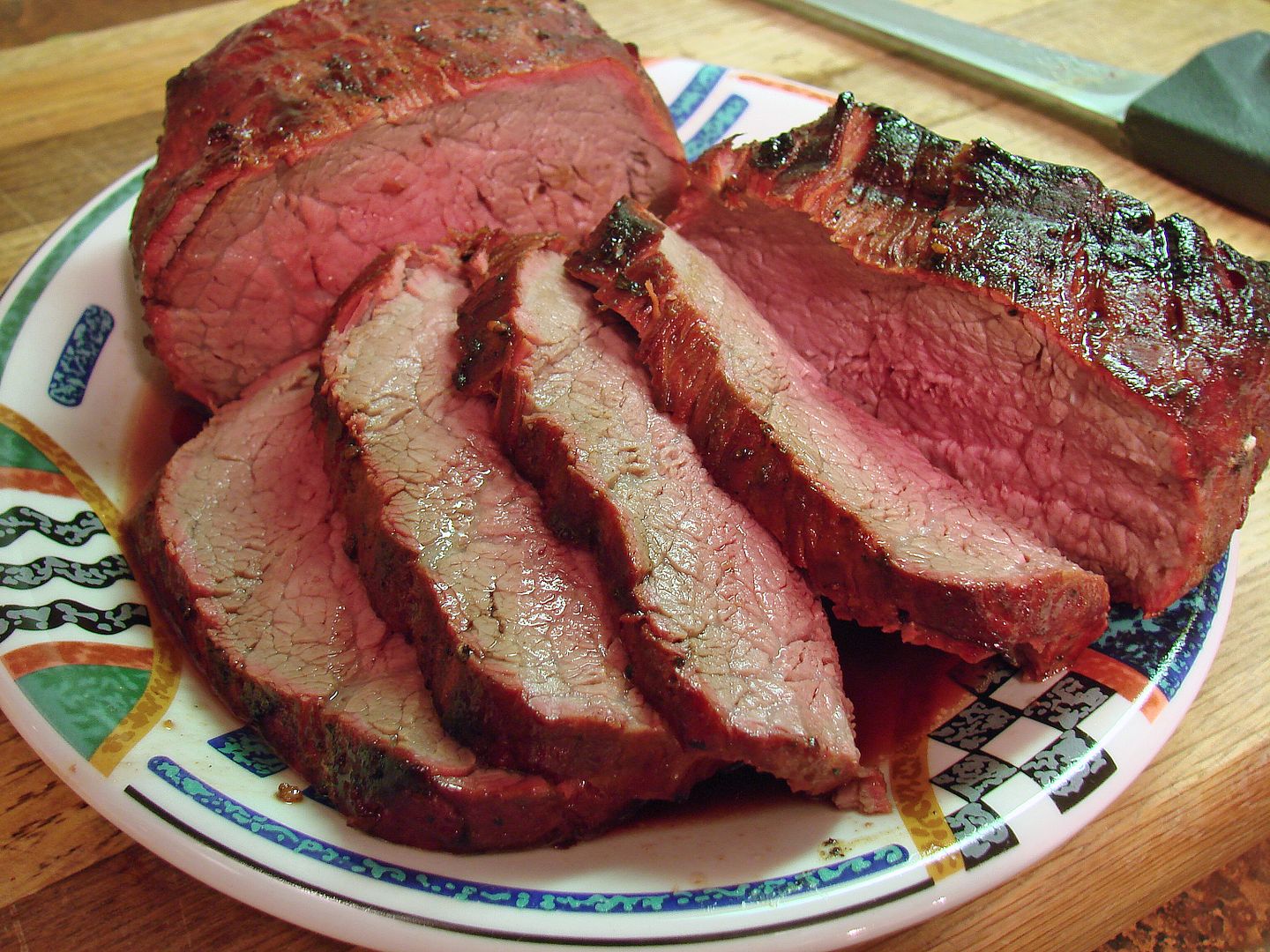
Welcome to the neighborhood.... you couldn't have picked an easier cook. Depending on how it's broken down, diameter wise the cook will take 1-1/2 to 2 hours. ~thirdeye~ Rule Number 4 is "don't ever set an exact sit down time, and you'll never be disappointed".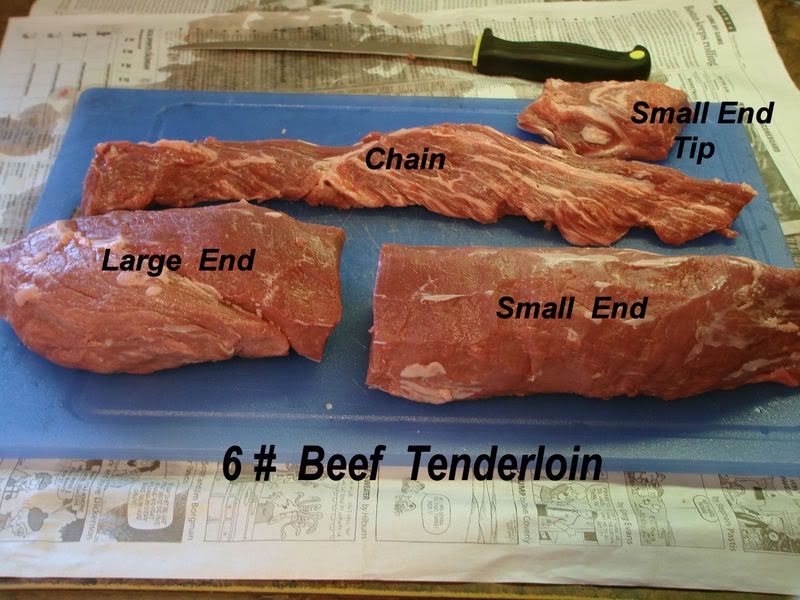
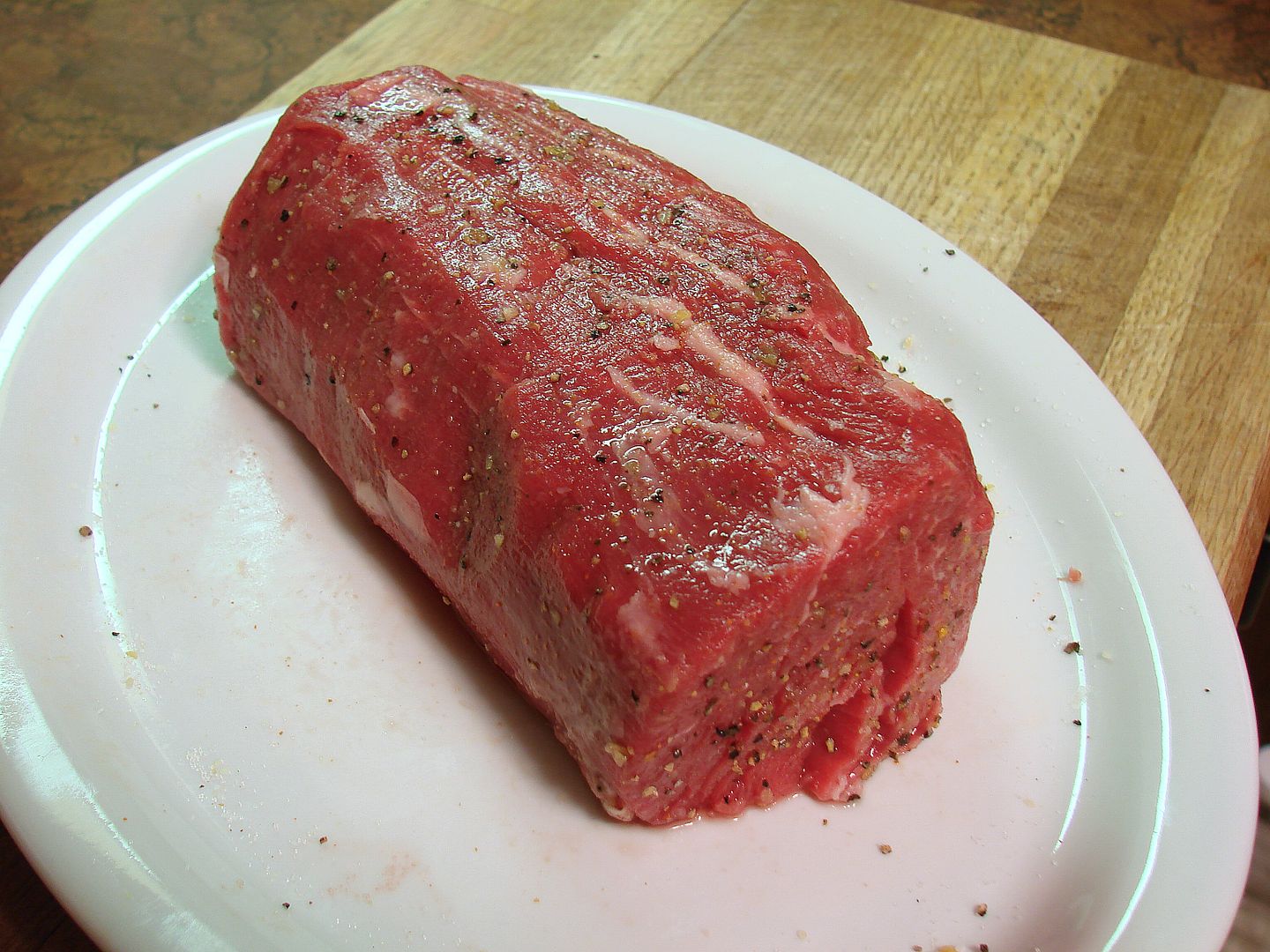
I use a raised set-up with a pan for a heat shield early on in the cook, then finish off raised direct. I start off around 300° pit temp and decide if I want to ramp the temp up or down depending on how fast it's cooking. Generally I like the color enough that I don't need an end sear.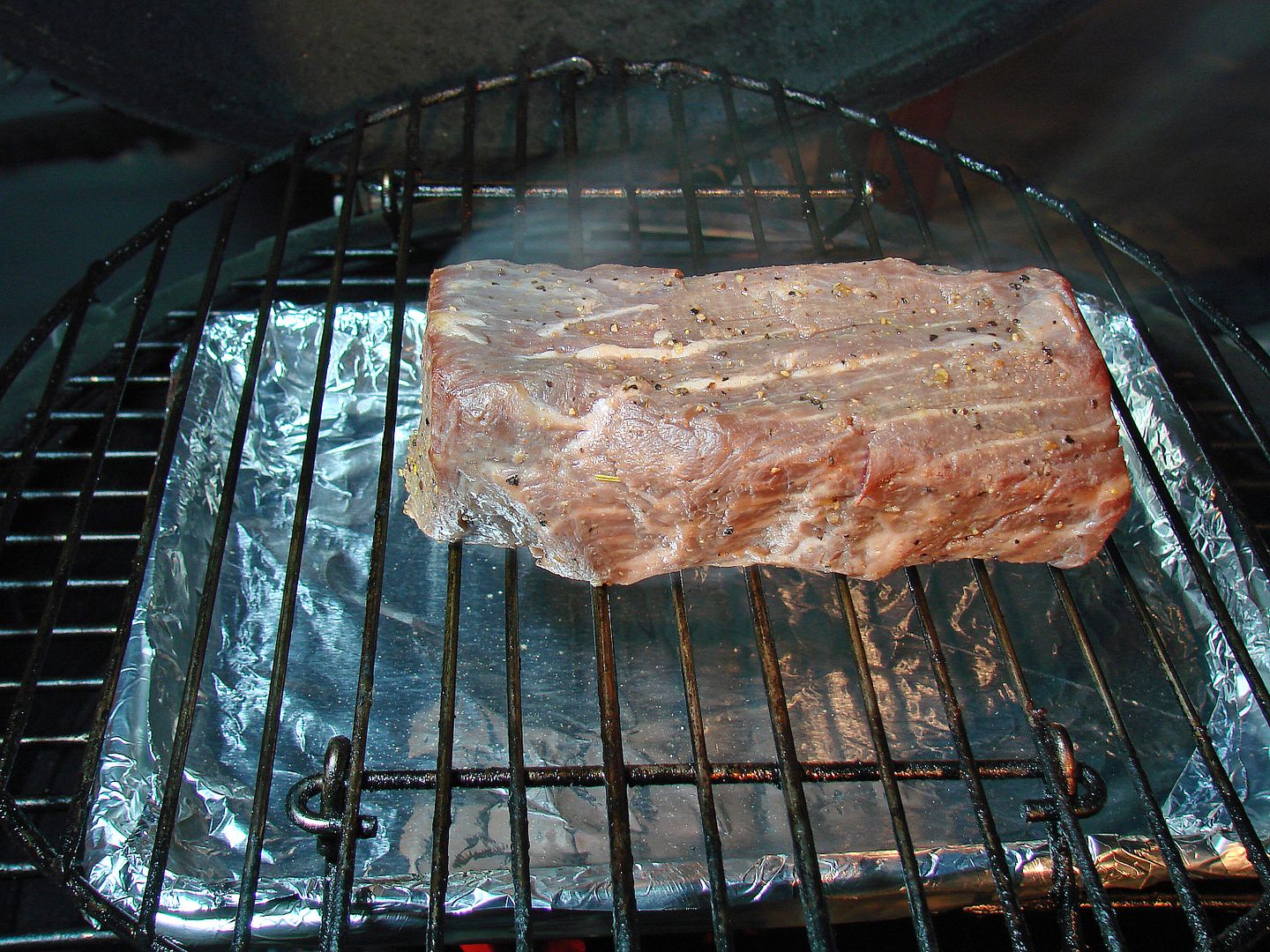
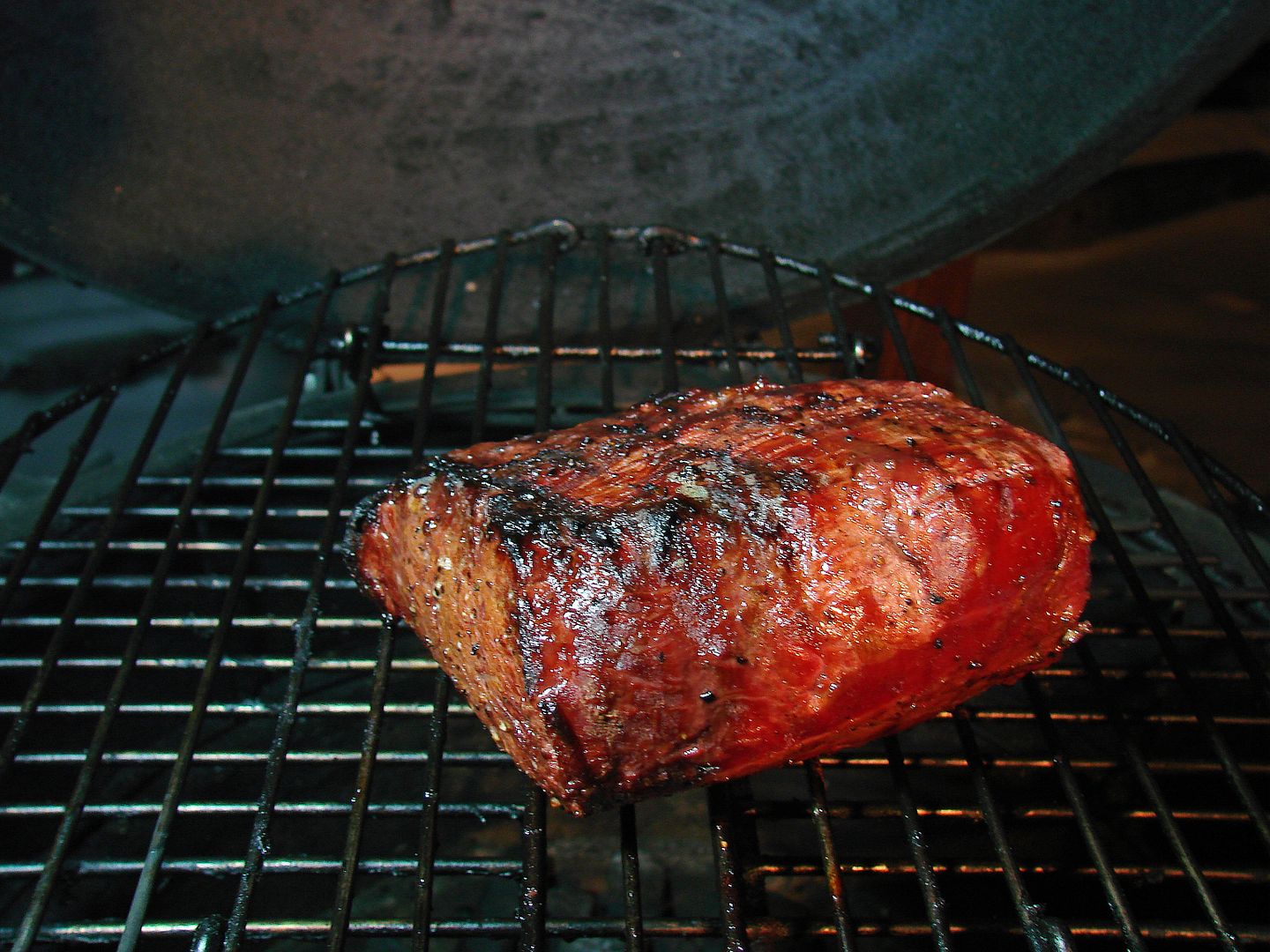
Keep the Egg going while you rest the roast, and if anyone's slice is too rare, just return it to the cooker for about a minute or two on each side. Serve the more done side up to fool the eye.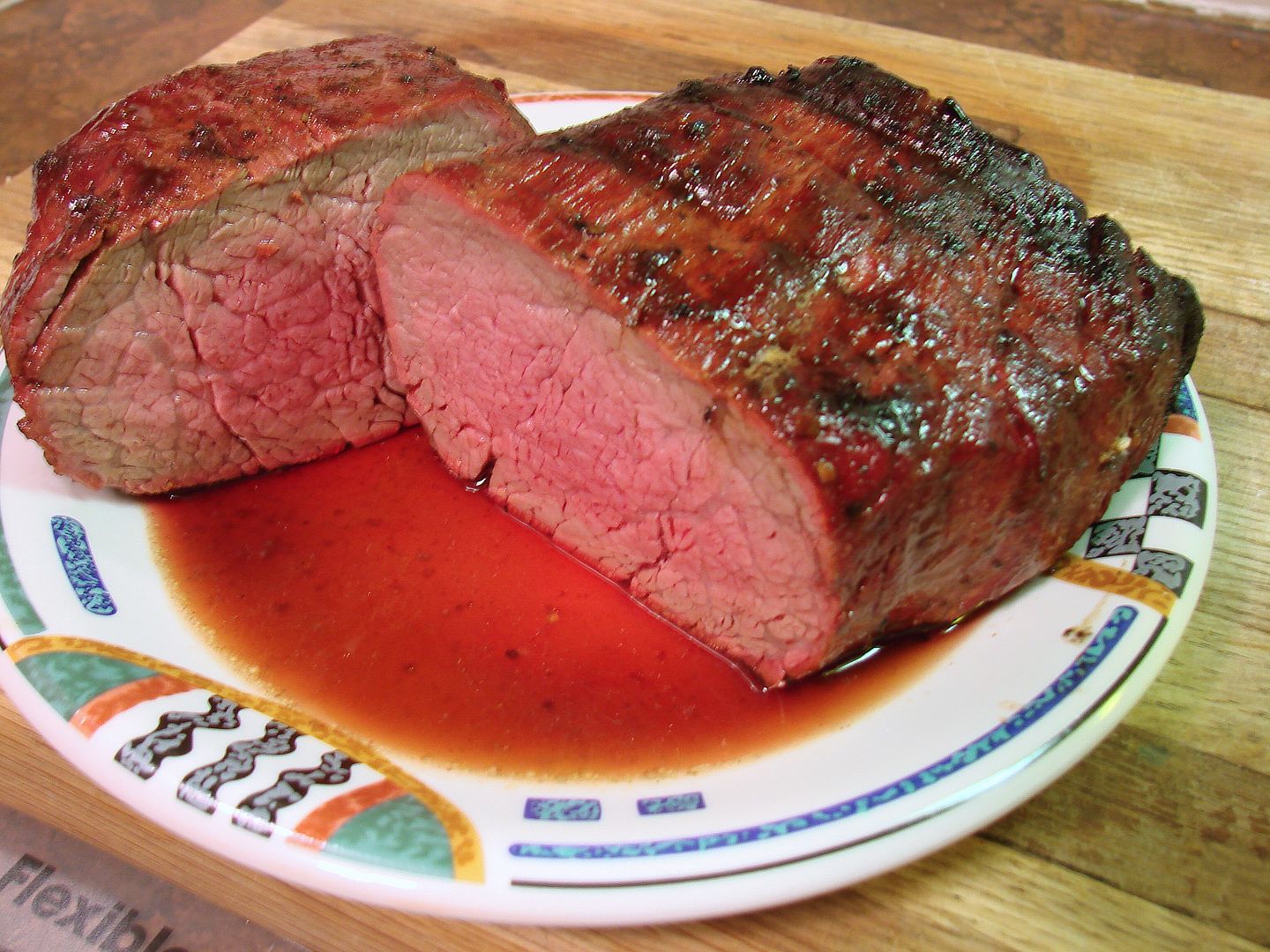 Happy Trails~thirdeye~Barbecue is not rocket surgery
Happy Trails~thirdeye~Barbecue is not rocket surgery -
Now THAT looks awesome!!
Please send directions. I'm comin' to your place!!!I hate it when I go to the kitchen for food and all I find are ingredients!
MichaelCentral Connecticut -
Thanks for the words! It was awesome. stuck with gameplan with sear first and then did 350(cut into two pieces fat and skinny-started fatboy 30 earlier). The fatboy piece showed 135 and I took it off and rested. It was rare and I put it back on for 25 minutes. med rare then. skinny was 130 and perfect the first time.
I probed the fat piece in several areas but all showed same temp. this is second time thicker meats showed 130+ but were too rare(and I like it med rare). any ideas?
bottom line it was really good; This is fun stuff! -
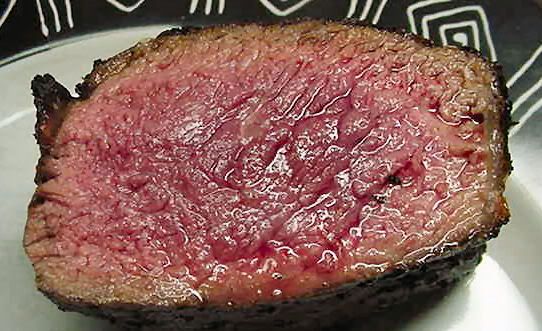
Mass, fat content, bone in or out, and cooking technique can all have an effect on heat transfer. And you proved that out from one end of a tenderloin to the other. Resting is also important, and the larger the roast the longer they need to rest. One of the reasons I like lower pit temps early and an end sear is the even doneness I can get, but that's just me.
It's really good you are using a thermometer, and another good idea is to record plenty of details of your cooks. Here is where this really makes sense.... As you get more pit time under your belt you will notice you prefer certain combinations of variables. Maybe a particular cut (like a NY steak over a T-Bone, a rib chop over a loin chop) You will also get in the habit of cooking certain thickness or weight of meats because your results are so good when you do. Good notes will allow you to repeat what works good for you.
For example, it's really common for me to buy steaks 1" to 1-1/4" in thickness, and chops 3/4" in thickness. I prefer briskets around 13# and butts around 8#. Some things I brine and I have certain trimming habits (like for thighs) that I use. I also believe that foil has a place in good barbecue. I personally put more faith into my dry seasonings than I do into a sauce. Having a good foundation of time, temps, flavors and experience allows me to cook outside the box with confidence, and this will be your goal.Happy Trails~thirdeye~Barbecue is not rocket surgery -
Great advice!
-
great advice, i agree.
get a composition notebook and keep details. been doing that for five years now. whether its tenderloin, butts, or prime rib, or turkey. I always try to stick with the same size until If got it down the way I like it.
Categories
- All Categories
- 184K EggHead Forum
- 16.1K Forum List
- 461 EGGtoberfest
- 1.9K Forum Feedback
- 10.5K Off Topic
- 2.4K EGG Table Forum
- 1 Rules & Disclaimer
- 9.2K Cookbook
- 15 Valentines Day
- 118 Holiday Recipes
- 348 Appetizers
- 521 Baking
- 2.5K Beef
- 90 Desserts
- 167 Lamb
- 2.4K Pork
- 1.5K Poultry
- 33 Salads and Dressings
- 322 Sauces, Rubs, Marinades
- 548 Seafood
- 175 Sides
- 122 Soups, Stews, Chilis
- 40 Vegetarian
- 103 Vegetables
- 315 Health
- 293 Weight Loss Forum
